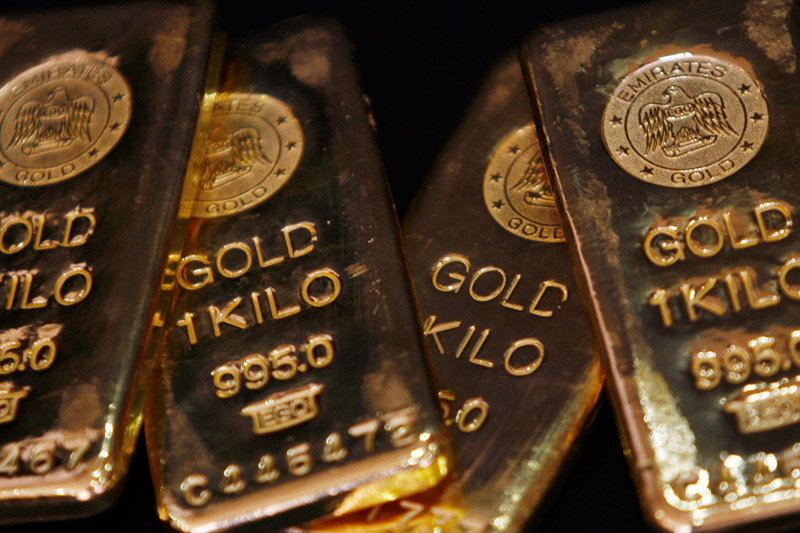Investing.com - Gold prices ended the week near the lowest level since February 2010 on Friday, as investors cut holdings of the precious metal amid expectations the Federal Reserve will raise interest rates for the first time in nearly a decade next month.
Gold for December delivery on the Comex division of the New York Mercantile Exchange dipped 10 cents, or 0.01%, to close the week at $1,080.90 a troy ounce on Friday.
Market players shrugged off weaker than expected U.S. retail sales and producer price inflation data on Friday, and instead focused on upbeat consumer sentiment figures.
On Thursday, gold fell to $1,073.00, the lowest level in almost six years, after a raft of Federal Reserve speakers suggested a December rate hike.
For the week, prices of the precious metal declined $7.80, or 0.63%, the fourth straight weekly loss and the longest stretch of weekly declines since late July.
Gold prices have lost nearly 9% since mid-October as investors recalibrated their expectations of U.S. monetary policy in response to hawkish signals from the Fed.
Expectations of higher borrowing rates going forward is considered bearish for gold, as the precious metal struggles to compete with yield-bearing assets when rates are on the rise.
The U.S. dollar held near seven-month highs against a basket of six other major currencies amid expectations for tighter monetary policy in the U.S. in the coming months.
Dollar-priced commodities become more expensive to investors holding other currencies when the greenback gains.
Also on the Comex, silver futures for December delivery shed 2.1 cents, or 0.15%, on Friday to settle at $14.20 a troy ounce by close of trade, a level not seen since August 27.
On the week, silver futures slumped 52.6 cents, or 3.31%, the fourth consecutive weekly decline.
Elsewhere in metals trading, copper for December delivery dropped 0.4 cents, or 0.21%, on Friday to settle at $2.168 a pound. It earlier fell to $2.151, a level not seen since July 2009.
For the week, copper prices dropped 6.8 cents, or 3.17%, as the possibility of higher borrowing costs in the U.S. and slower global economic growth, especially in China, weighed.
Soft Chinese data on trade activity, inflation and industrial production last week reinforced the view that the economy remains in the midst of a gradual slowdown which will require policymakers in Beijing to roll out more measures to boost growth in coming months.
Prices of the red metal are down 25% since May as fears of a China-led global economic slowdown spooked traders and rattled sentiment.
The Asian nation is the world’s largest copper consumer, accounting for almost 40% of world consumption.
